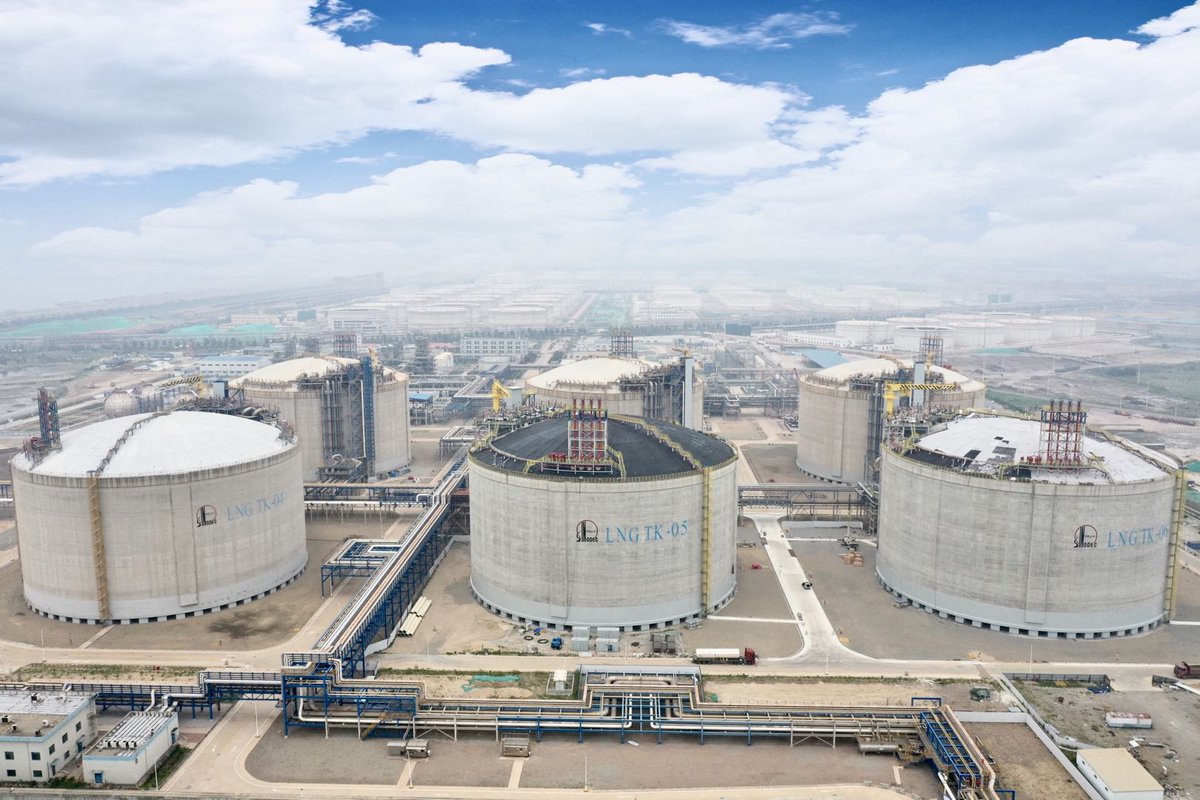China’s state-controlled energy giant Sinopec is expecting its LNG imports to rise almost 20 percent in 2021 when compared to the previous year, as the firm continues to work on boosting its regasification capacity.
Sinopec said on Monday it estimates its natural gas unit would unload more than 20 million tonnes of LNG at its terminals during this year, an increase of 19.7 percent when compared to 2020.
The firm has this year revealed several new developments regarding its LNG import terminals.
It has recently received approval to build the third phase at its LNG import terminal in the northern port city of Tianjin, near Beijing.
According to Sinopec, the expansion project includes five new LNG storage tanks each with a capacity of 270,000 cubic meters.
The project would boost the annual LNG receiving capacity of the Tianjin terminal to 11.65 million tonnes.
In August, Sinopec has also completed the second expansion phase at its Qingdao LNG import terminal in Shandong province.
As part of that expansion, Sinopec built two new 160,000-cbm LNG storage tanks, boosting the terminal’s yearly handling capacity to 7 mtpa.
The energy giant is also working on the third expansion phase which it aims to complete in 2023.
Besides these facilities, Sinopec has recently started building the Longkou LNG import terminal in Shandong province.
Located in the Longkou port area, the first phase of the LNG facility would have a capacity of 6.5 mtpa, according to Sinopec.
China to become world’s largest LNG importer
China’s LNG imports hit an all-time high last year rising 11.5 percent when compared to the year before. The country imported 67.13 million tonnes in 2020, cementing its position as the second-largest LNG importer, after Japan.
China will probably overtake Japan as the world’s largest LNG importer this year on the back of high demand from the power generation and industrial sectors.
During the January-October period, China imported 64.50 million tonnes of the fuel. Compared to the same period last year, LNG imports rose by 22.5 percent.
China’s pipeline gas imports also rose by 22 percent in the January-October period reaching about 34.58 million tonnes.
On the other side, Japan’s LNG imports dropped in October for the second straight month and the country imported about 61.37 million tonnes in the January-October period. This is some 3.13 million tonnes less than China imported during the same period.

